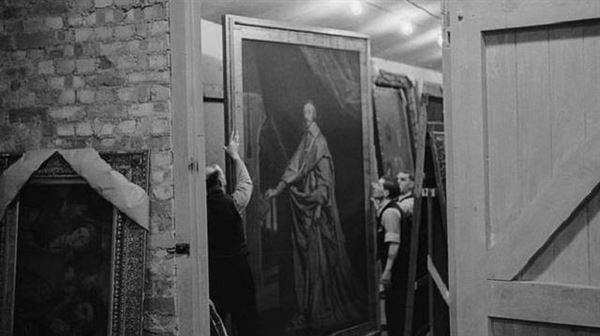Nazi German fighter planes mercilessly bombarded many towns and cities, including London, in a non-stop campaign during the worst periods of World War
Nazi German fighter planes mercilessly bombarded many towns and cities, including London, in a non-stop campaign during the worst periods of World War II.
Thousands perished, and families in southern England resorted to sending their children up north as Hitler’s war machine was causing the greatest devastation the U.K. had ever suffered.
In 1940 and 1941, thousands of homes, factories, hospitals, and facilities were under constant threat from almost the relentless airstrikes known as the Blitz.
But amid all that destruction, one particular building overlooking the Welsh coastal town of Aberystwyth had nothing to fear, as Nazi pilots deliberately left it unscathed.
The National Library of Wales in Aberystwyth survived the war to the end, with not even a single bomb harming its grandeur.
The reason German pilots never bombed it was simple but also chillingly strategic: They used the building as a reference point to find and bomb Birmingham and other towns and cities of the West Midlands, east of Wales.
When they reached the big library, located on Wales’ Atlantic coast, the Nazi bombers simply turned east, seeking more devastation on other targets.
– The big secret
However, while the Blitz and the Battle of Britain continued day and night, the National Library of Wales also held onto a big secret that the Nazis were oblivious to.
London was the main target for Hitler’s Luftwaffe air force, and the airstrike alarms sounded very often.
Since the start of the bombardment, British authorities were very concerned about the fate of their cultural and historical treasures kept in museums across the country.
The war cabinet even thought about shipping them to Canada for safekeeping but instead, many artworks were brought to Wales.
Many priceless paintings from the National Gallery were actually stored in disused coal mines in northwestern Wales.
The National Library of Wales in Aberystwyth thus played a key role in protecting some very important relics from English history.
The caves and a series of tunnels under the great building provided a sanctuary for priceless treasures including the Athenian Elgin Marbles, the Magna Carta, drawings by Leonardo da Vinci, paintings by Rembrandt, letters from kings and queens of England, and manuscripts by the bard himself, William Shakespeare.
Paintings by Renaissance masters Michelangelo and Raphael and works by Geoffrey Chaucer were also stored in the tunnels underneath the library.
The National Library of Wales today houses a staggering 7 million feet (2,150 km) of film, 250,000 hours of video, 7 million books and newspapers, 40,000 manuscripts, 1.5 million maps, 150,000 hours of sound recordings, nearly a million photographs, 60,000 artworks, and 1,900 cubic meters of archives.
The foundation stone for the library, designed by architect Sidney Greenslade, was laid in 1911 by King George VI and Queen Mary.
After a long construction period, which had to be paused due to various reasons, including World War I, the library opened in 1937.
It bears the immense task of keeping a copy of every written work in Wales, and over the decades the grand building has had to expand.
Overlooking the Atlantic coast of Aberystwyth, after having shepherded priceless masterworks through the Blitz, the library remains a powerful witness to history.
